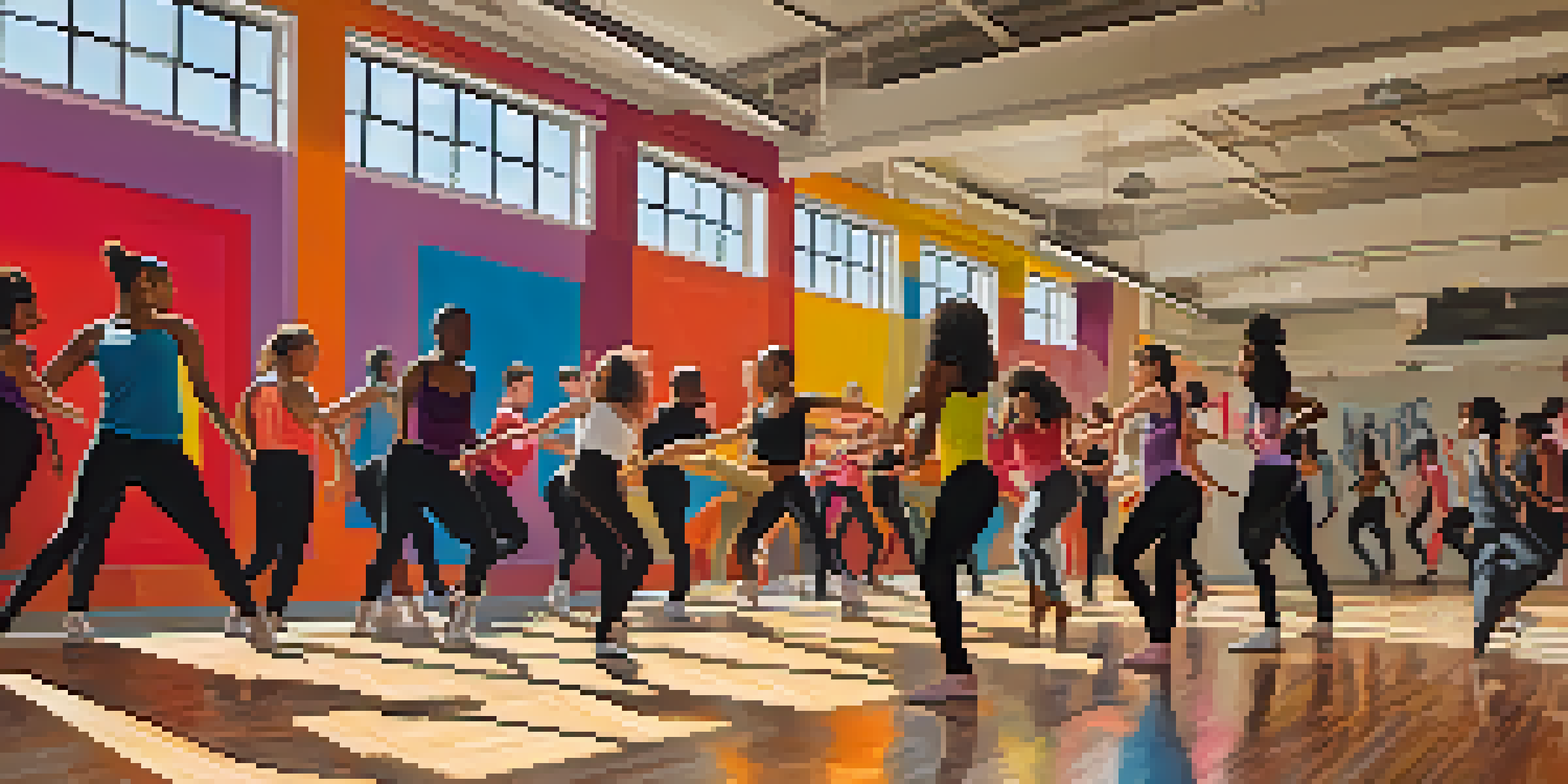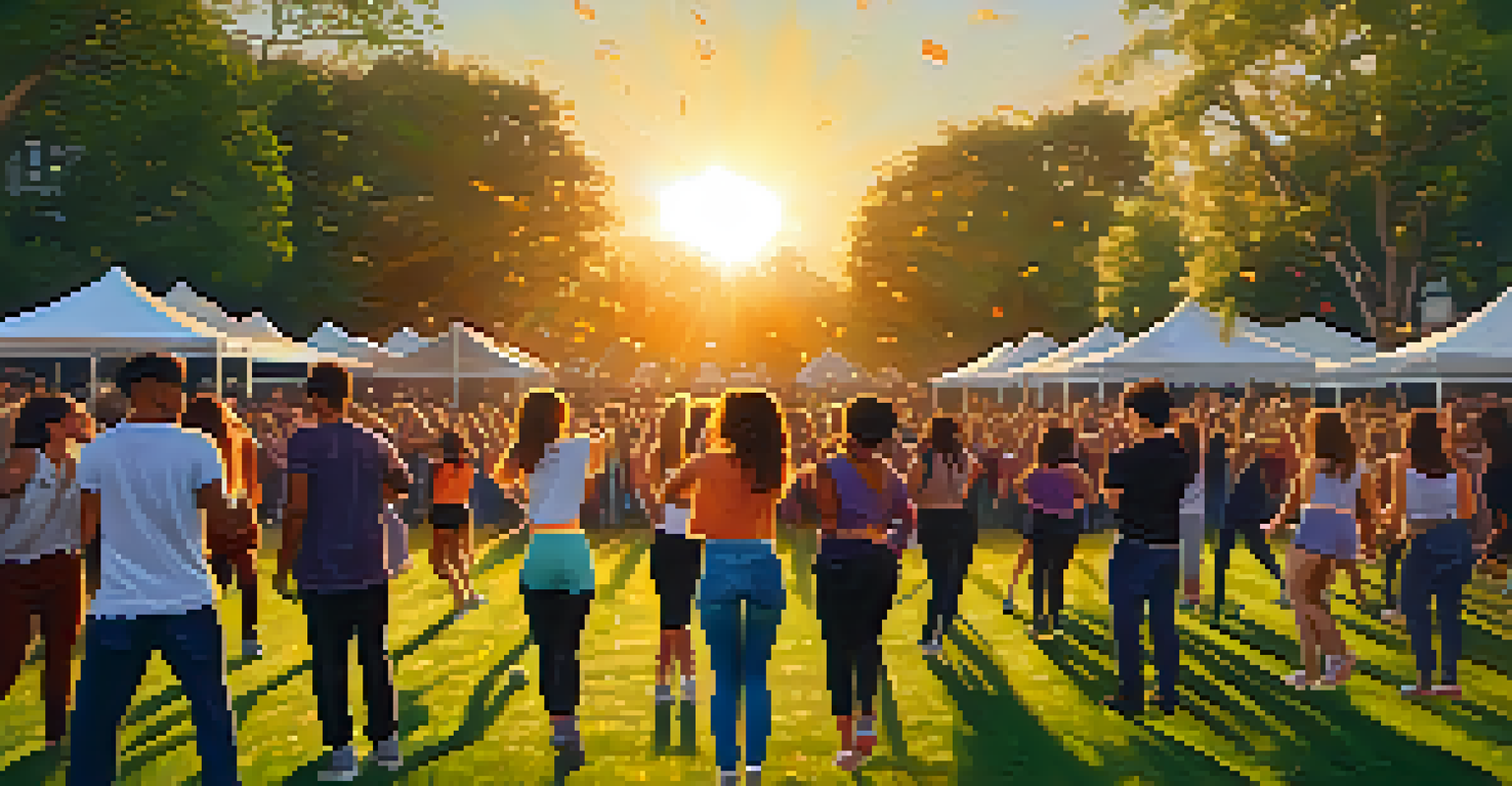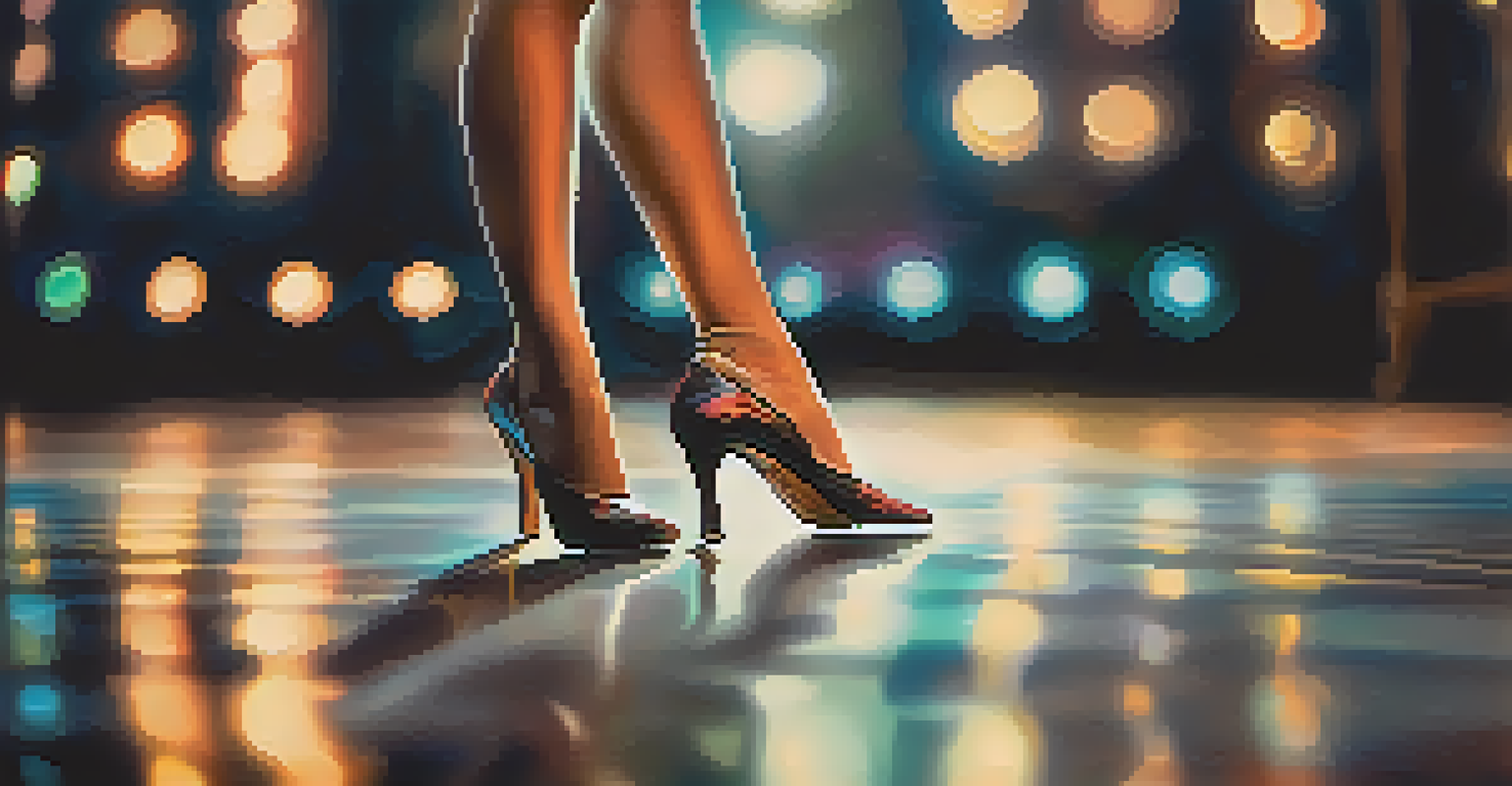The Impact of Social Media on Dance Trends and Communities

Social Media: A New Stage for Dance Expression
Social media platforms like Instagram and TikTok have transformed how dancers showcase their talent. With a simple video upload, anyone can share their dance moves with a global audience. This democratization of dance has made it easier for emerging artists to gain visibility, allowing them to connect with fans and fellow dancers alike.
Dance is the hidden language of the soul.
For many, social media acts as a virtual stage, where creativity flourishes and new dance styles emerge. Dancers often draw inspiration from viral challenges and trends, leading to the evolution of diverse dance genres. The result? A vibrant tapestry of dance that reflects contemporary culture and personal expression.
Moreover, social media encourages collaboration among dancers across the world. A dancer in New York can partner with someone in Tokyo, blending their unique styles and cultural influences. This interconnectedness fosters a sense of global community, where dance becomes a universal language.
Viral Dance Challenges: Spark for New Trends
Viral dance challenges have become a cultural phenomenon, often igniting new trends overnight. Platforms like TikTok are famous for challenges that encourage users to replicate specific dance moves, leading to widespread participation. These challenges not only showcase individual talent but also create a sense of camaraderie among participants.

One popular example is the 'Renegade' dance, which took social media by storm in 2019. Initially choreographed by a teenager, it quickly spread across TikTok, inspiring countless users to learn and share their versions. Such trends highlight how quickly dance can transcend geographical boundaries, uniting people through shared movement.
Social Media Empowers Dancers
Platforms like Instagram and TikTok democratize dance, allowing emerging artists to showcase their talent and connect globally.
Additionally, these challenges often bridge gaps between different dance styles, encouraging fusions and innovations. Dancers experiment with various genres, incorporating hip-hop, ballet, and even traditional styles into their routines. This blending of influences enriches the dance community and keeps it dynamic.
Building Communities through Dance Hashtags
Hashtags play a crucial role in connecting dancers and fostering communities online. By using specific tags, dancers can discover like-minded individuals, tutorials, and inspiration related to their favorite styles. This virtual networking has led to the formation of supportive groups that encourage collaboration and growth.
Social media is about the people! Not about your business. Provide for the people and the people will provide you.
For instance, hashtags like #DanceFam and #DancerLife create a sense of belonging among users. They provide a platform for dancers to share experiences, challenges, and triumphs, reinforcing a communal bond. This sense of community extends beyond social media, often spilling into real-life meetups and events.
Moreover, these online communities are instrumental in nurturing emerging talents. Experienced dancers often share tips, resources, and constructive feedback, helping newcomers refine their skills. In this way, social media not only serves as a showcase but also as a training ground for the next generation of dancers.
Influencers: Shaping Dance Culture and Trends
Dance influencers have emerged as significant players in the social media landscape, shaping trends and inspiring followers. With their large audiences, these individuals can launch new styles or revive forgotten ones, driving engagement and interest in dance. Their impact often extends beyond mere choreography, influencing fashion, music, and even social issues.
For example, influencers like Charli D'Amelio and Jalaiah Harmon have not only popularized specific dances but have also become role models for aspiring dancers. They showcase the hard work and dedication that goes into mastering dance, inspiring their fans to pursue their passion. This visibility can be a game-changer for many, providing a sense of hope and motivation.
Viral Challenges Drive Trends
Viral dance challenges on social media spark new trends and foster community participation, blending various dance styles.
Additionally, brands have recognized the power of dance influencers, often collaborating with them for promotions and campaigns. This partnership not only elevates the brand's visibility but also reinforces the dancer's status within the community. As a result, the relationship between influencers and brands continues to evolve, reflecting the changing landscape of dance.
The Rise of Dance Tutorials on Social Media
Dance tutorials have become a staple on platforms like YouTube and Instagram, making learning accessible to everyone. These bite-sized lessons break down complex moves into manageable steps, allowing users to follow along at their own pace. This accessibility democratizes dance education, enabling individuals to learn from the comfort of their homes.
Moreover, tutorials cater to various skill levels, from beginners to advanced dancers. This inclusivity encourages more people to join the dance community, regardless of their prior experience. As a result, the variety of styles and levels represented on social media continues to grow, enriching the landscape.
Additionally, many dancers use tutorials to share their unique perspectives and techniques. This not only fosters creativity but also encourages the exchange of ideas and styles. Viewers are often inspired to put their spin on popular moves, further contributing to the dynamic nature of dance trends.
Dance as a Form of Social Activism on Social Media
Social media has become a powerful platform for using dance as a form of social activism. Dancers often use their movements to raise awareness about important issues, from racial equality to mental health. By merging art and activism, they can inspire change while engaging a broad audience.
For instance, during the Black Lives Matter movement, dancers created powerful videos highlighting social justice themes. These performances not only conveyed messages but also ignited conversations and encouraged viewers to take action. This intersection of dance and activism showcases the medium's potential to evoke emotion and inspire change.
Dance as Activism on Social Media
Dancers leverage social media to address social issues, merging art with activism to inspire change and raise awareness.
Moreover, social media provides a space for marginalized voices to be heard. Dancers from diverse backgrounds share their stories, experiences, and challenges through movement, fostering empathy and understanding. This representation is crucial in broadening perspectives and promoting inclusivity within the dance community.
The Future of Dance in the Age of Social Media
As social media continues to evolve, its impact on dance trends and communities will undoubtedly grow. New platforms and technologies, such as augmented reality, may reshape how we experience and engage with dance. This constant innovation opens up exciting possibilities for creativity and collaboration.
Furthermore, the rise of virtual performances and competitions has changed the way dancers showcase their talent. With online events gaining popularity, dancers can now reach audiences far beyond their local communities. This shift may lead to an even more diverse range of dance styles and influences, enriching the global dance landscape.

Ultimately, the future of dance in the age of social media promises to be vibrant and inclusive. As dancers continue to connect, collaborate, and inspire one another, they will shape a community that embraces creativity and innovation. The journey of dance is ever-evolving, and social media will be at the forefront of this transformation.